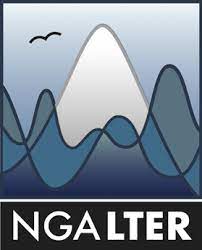Data Discovery Using DataONE
Hands-on Activity
Introduction
The Long-Term Ecological Research (LTER) program requires all sites to publish their data online within two years of collection. However, they do not specify where data must be published. The Northern Gulf of Alaska (NGA LTER) has chosen to publish our data via Axiom Data Science’s Research Workspace (RW). Most other LTER sites submit their data to the Environmental Data Initiative (EDI). How could an investigator find datasets from multiple LTER sites if they are archived in different repositories?
DataONE (Data Observation Network for Earth) was established by the National Science Foundation as a network of data repositories. Data collections are held in separate “member” repositories but are searchable via a central interface. A list of member institutions is found at https://www.dataone.org/network/. Both Research Workspace and EDI are members of DataONE, so it would be a good search interface for investigators hoping to integrate data from several LTER sites.
This hands-on activity provides a chance to explore the DataONE portal and to practice searching for data using their interface.



Instructions
Plan your search
Think about the research you are doing. Think of a way you could expand it to include existing datasets. Some examples might include:
- Comparing your data to other LTER sites such as:
- California Curent (LTER Site CCE)
- Beaufort Lagoon (BLE)
- Terrestrial Alaskan sites like Arctic LTER (ARC) or Bonanza Creek (BNZ)
- Comparing your data to other research programs or organizations in the Gulf of Alaska, such as:
- GLOBEC
- Alaska Department of Fish and Game
- USGS
- Exxon Valdeze Oil Spill Trustee Council (EVOS)
- NOAA
- Data of the same type or collected using the same instrument, using terms like:
- glider
- grazing rates
- trace metals
Before you start searching, take a moment to describe what you are looking for:
And underline keywords that might be useful.
Look for Datasets
Go to https://search.dataone.org/data and experiment with different searches:
- Try searching by
Location,Data Attribute,Member Node, etc. - Try using the
free text search - Use the author names from one search result to perhaps turn up more relevant records
Result Evaluation
During your search, pick 3 results and record relevant information about them here:
Dataset 1
Dataset title
Authors/Organization
Description
Download format (if available)
How did you find it?
Dataset 2
Dataset title
Authors/Organization
Description
Download format (if available)
How did you find it?
Dataset 3
Dataset title
Authors/Organization
Description
Download format (if available)
How did you find it?
Final Questions for Discussion
- Could you find what you wanted?
- What metadata was important in your search?
- Did you end up focusing on a single repository? Would it have been faster to go directly there?
